Metro Areas Weigh In on “Forever Chemicals”

📌 Key Takeaways
- Nearly 1 in 4 Americans are unaware of PFAS (“forever chemicals”) in their water.
- The highest PFAS levels among tested cities were in: San Luis Obispo, CA, Issaquah, WA, and Hyannis, MA.
- The lowest PFAS levels among tested cities were in Sausalito, CA, Los Angeles, CA, and Pueblo, CO.
- 78% of metropolitan residents believe PFAS chemicals have impacted their health.
A Dangerous Cocktail
What if H2O isn’t the only acronym in your water? PFAS are hidden chemicals that linger in the water supply, but many Americans aren’t aware that they exist, even after taking a big gulp of them. Might PFAS be an invisible—and unwelcome—guest in your home?
To find out, WaterFilterGuru.com surveyed 1,000 metropolitan residents about their perceptions of water quality and identified the cities and states with the highest concentrations of PFAS.
Where Are Levels the Most Concerning?
What are PFAS, and where are they a cause for concern? Let’s look at Americans’ awareness of these contaminants in their water and uncover the tested locations with the highest and lowest concentrations.
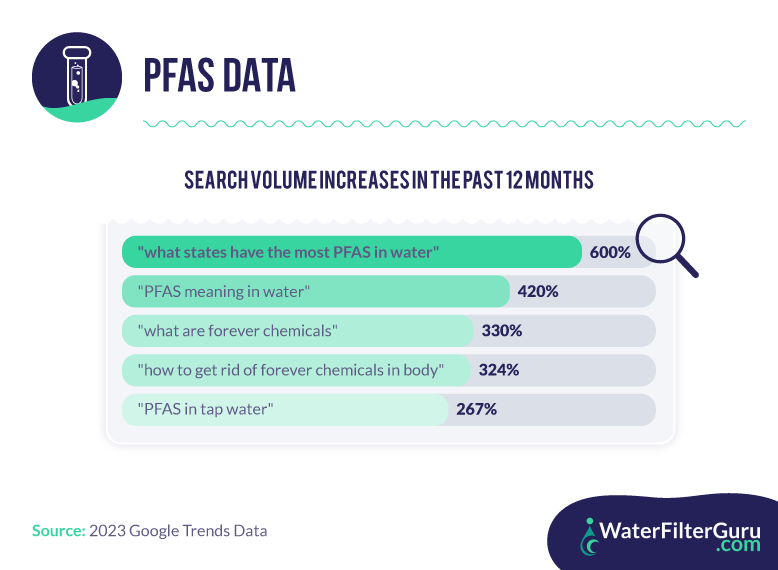
Forever is a long time, so apprehension about manufactured “forever chemicals” is understandable. PFAS (Perfluoroalkyl and Polyfluoroalkyl Substances) are synthetic chemicals present in everyday consumer products that have leaked into the soil, air, and water. They have been nicknamed “forever chemicals” because they linger indefinitely in our bodies and the environment.
Interest in forever chemicals is on the rise. According to Google Trends, the search volume for “what states have the most PFAS in water” has increased 600% in the past 12 months. Additionally, inquiries about “how to get rid of forever chemicals in body” have spiked 324%. PFAS have been linked to potential health problems, so it’s no wonder health-conscious Americans are educating themselves on the dangers of these contaminants.
Next, we examine the states and cities that test for PFAS most often and determine which have the highest levels in their water supply.
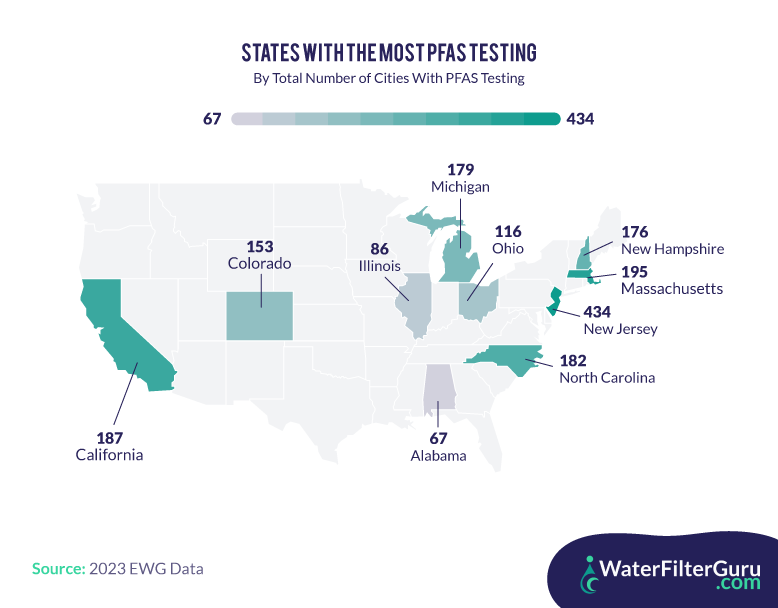
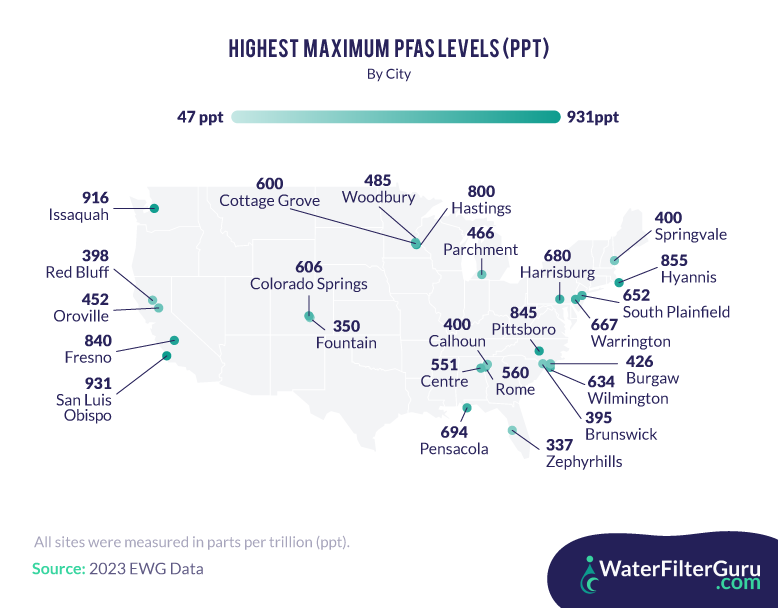
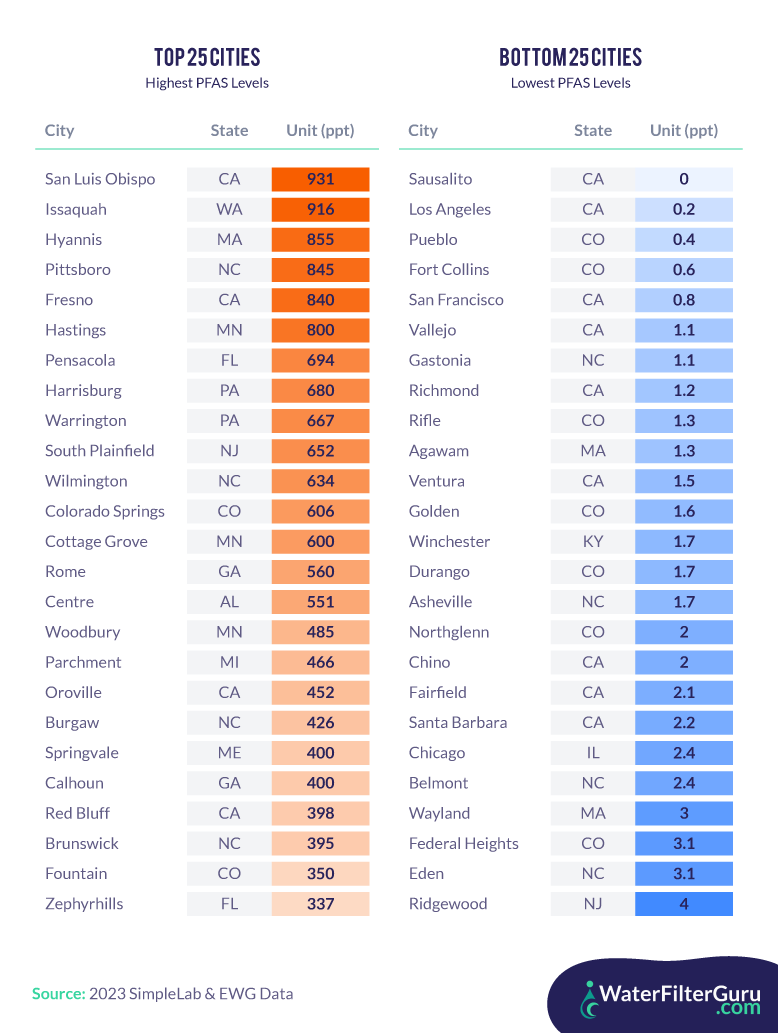
The severity of PFAS levels can only be monitored by continually gathering data, and the states with the most vigilant PFAS testing were New Jersey, Massachusetts, and California. Concern about forever chemicals is warranted in cities with the highest detected PFAS levels in parts per trillion (ppt), including:
- San Luis Obispo, CA (931 ppt)
- Issaquah, WA (916 ppt)
- Hyannis, MA (855 ppt)
In contrast, residents can rest easy in this trio of cities where PFAS concentrations were the lowest:
- Sausalito, CA (0 ppt)
- Los Angeles, CA (0.2 ppt)
- Pueblo, CO (0.4 ppt)
PFAS levels vary widely between cities, but most average residents are unaware of local levels. How are PFAS—known or unknown—affecting American households?
Insider Perspective
With PFAS clearly a cause for concern, who’s thinking twice before turning on the tap?
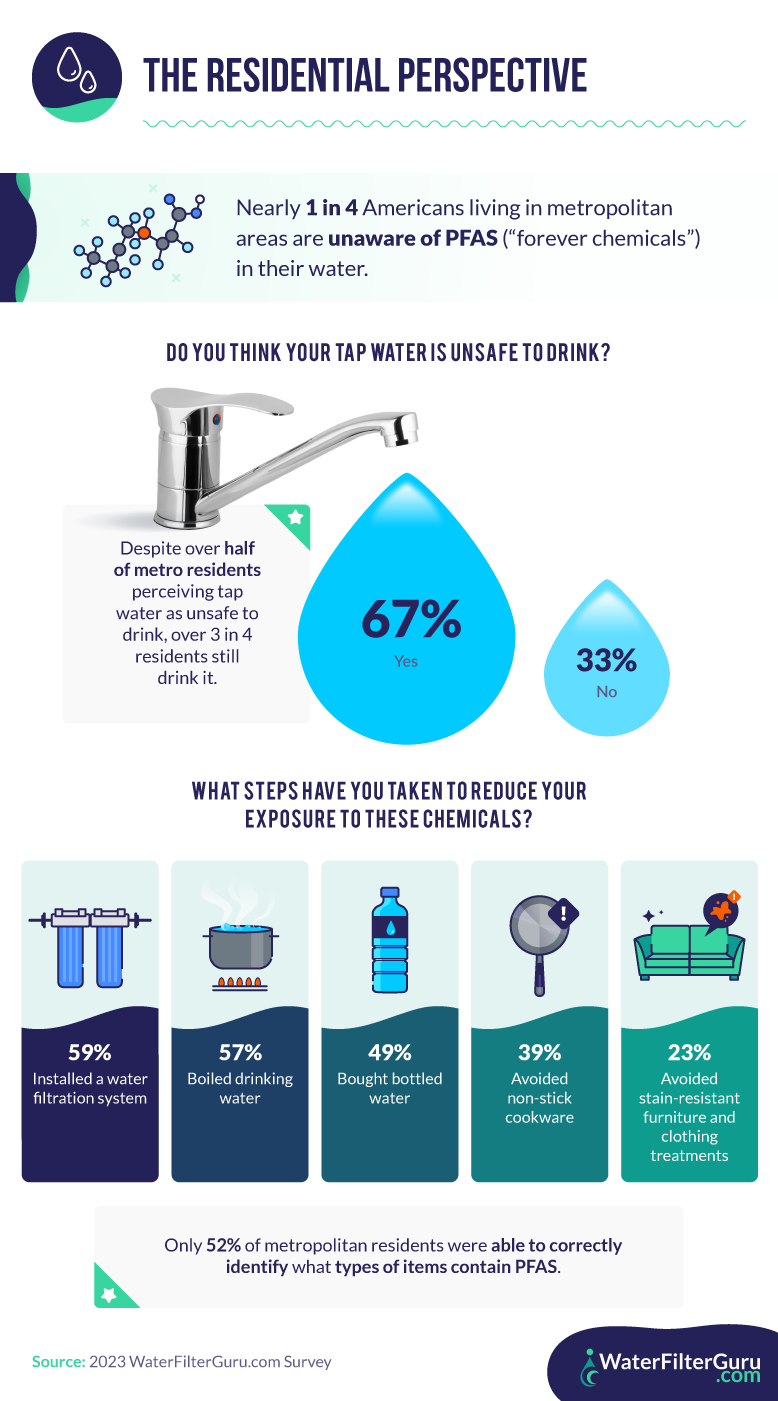
If you’re one of the newcomers to the PFAS predicament, you’re not alone: Nearly 1 in 4 Americans are unaware they exist. Even more alarming, many people who are aware of these water contaminants don’t know how to avoid them. Over half of metro residents (67%) believe their tap water is unsafe to drink, but more than 3 in 4 residents still drink it. The bad news is PFAS aren’t going anywhere; the good news is that it’s possible to reduce your risk of exposure.
The first step to ensuring your tap water is safe is to have it tested. Next, learn which products contain PFAS so you can avoid them. Only 52% of metropolitan residents could identify what types of items contain PFAS, but avoiding such items can be crucial to reducing the overall presence of PFAS. When you reduce the amount of PFAS in your local environment—and therefore your own taps—your water supply and your body will thank you.
To avoid PFAS already present in your water, you can use a water filtration system. More than half of survey participants reported using a water filtration system to keep their drinking water contaminant-free.
Water and Health
Odds are, you have a kitchen cabinet you have to open slowly for fear of a water bottle avalanche. We’re constantly reminded to stay hydrated, but how we choose to do so can affect the amount of PFAS in our bodies.
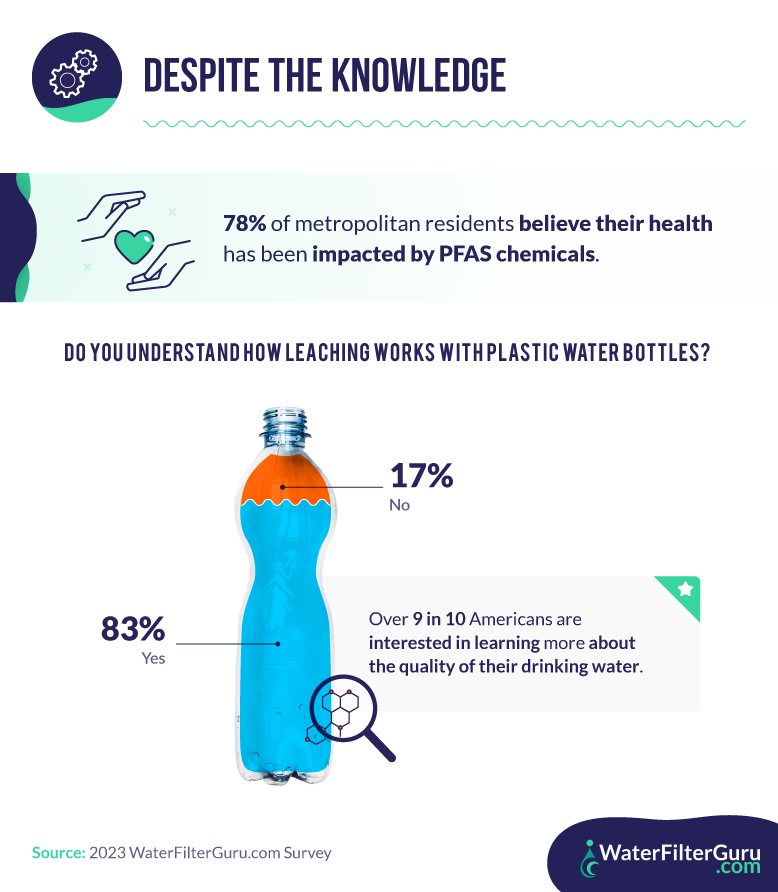
Your tap water might be safe, but is your water bottle? About 1 in 6 survey respondents admitted they weren’t aware of how chemicals in plastic bottles leach into the water. Over 90% of Americans are interested in finding out more about the quality of their drinking water. When it comes to something as simple as water, surprisingly, there’s a lot to learn—-and a lot you can do to protect your water quality.
There are also ways to protect your health. A staggering 78% of metropolitan residents believe PFAS chemicals have impacted their health. With what you now know about the permanent consequences of these forever contaminants, you might be one of them. If you’re concerned about the effects of PFAS exposure, talk to your doctor about how to become the healthiest and most hydrated version of yourself. If you’re concerned about PFAs in your drinking water, here are some of the best water filters specifically designed to effectively remove these contaminants.
Bottling Up PFAS
The PFAS already in our environments and bodies might not be going anywhere soon, but we can still do our part to prevent an even bigger problem. On a communal level, we can understand how PFAS enter the water supply and reduce our personal contributions. In our own homes, we can take steps to protect the water supply and understand how PFAS are introduced into our bodies. When we’re aware of the risks of PFAS and know how to protect ourselves against them, we can feel a little more at ease when we reach for the tap.
Methodology
We surveyed 1,000 metropolitan residents regarding their perceptions of water quality. The mean age of respondents was 35 years old. Among them, 58% were male and 41% were female. Respondents comprised the following generational breakdown: 16% Gen Z, 15% Gen X, 57% millennials, and 12% baby boomers. PFAS analysis based on data obtained from SimpleLab and EWG. Lastly, search volume was obtained via Google Trends.
About WaterFilterGuru.com
Water is necessary for all aspects of life, and WaterFilterGuru.com wants everyone to thrive knowing they have access to clean and healthy water. Our mission is to help you find information, products, and solutions to address your water quality needs.
Fair Use Statement
Thirsty to share what you learned? Readers can share these findings for non-commercial purposes only and must link back to this article.
